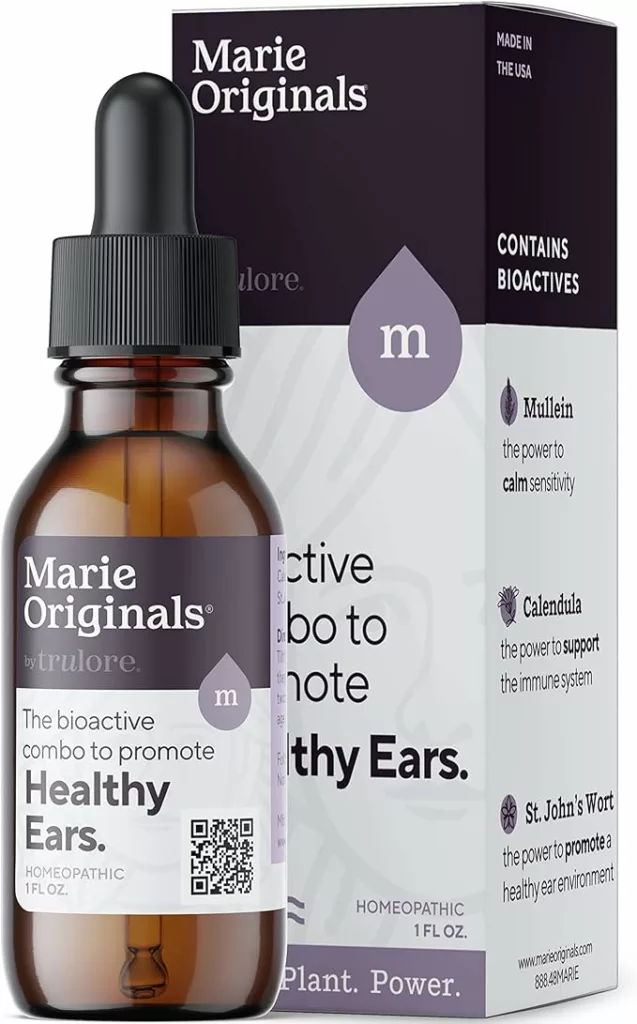Sweet oil, often recognized as olive oil, is traditionally known for its culinary uses but has also found a place in home remedies, particularly for ear-related issues. The oil is credited with the ability to soften and remove excess earwax, and its soothing properties have been applied to ease earaches.
Utilized for generations, sweet oil is valued for its natural, minimally processed composition and its accessibility as an over-the-counter remedy for ear care.
When it comes to ear health, sweet oil is believed to serve as a natural alternative to assist with ear infections and the maintenance of ear hygiene. While its efficacy in medical terms has been debated, anecdotal evidence and some studies suggest it can be an effective first line of defense for mild conditions of the ear. It is also considered as a remedy for managing earwax build-up, in hopes of preventing blockages that can lead to discomfort or hearing impairment.
Click here to purchase Humco Sweet Oil and discover its multiple uses for yourself![2]
Key Takeaways
- Sweet oil is commonly used for managing ear-related problems such as earwax build-up and earaches.
- It has been historically regarded as a natural and accessible way to maintain ear health.
- While considered beneficial for mild ear issues, professional medical advice should be sought for persistent or severe conditions.
Understanding Sweet Oil
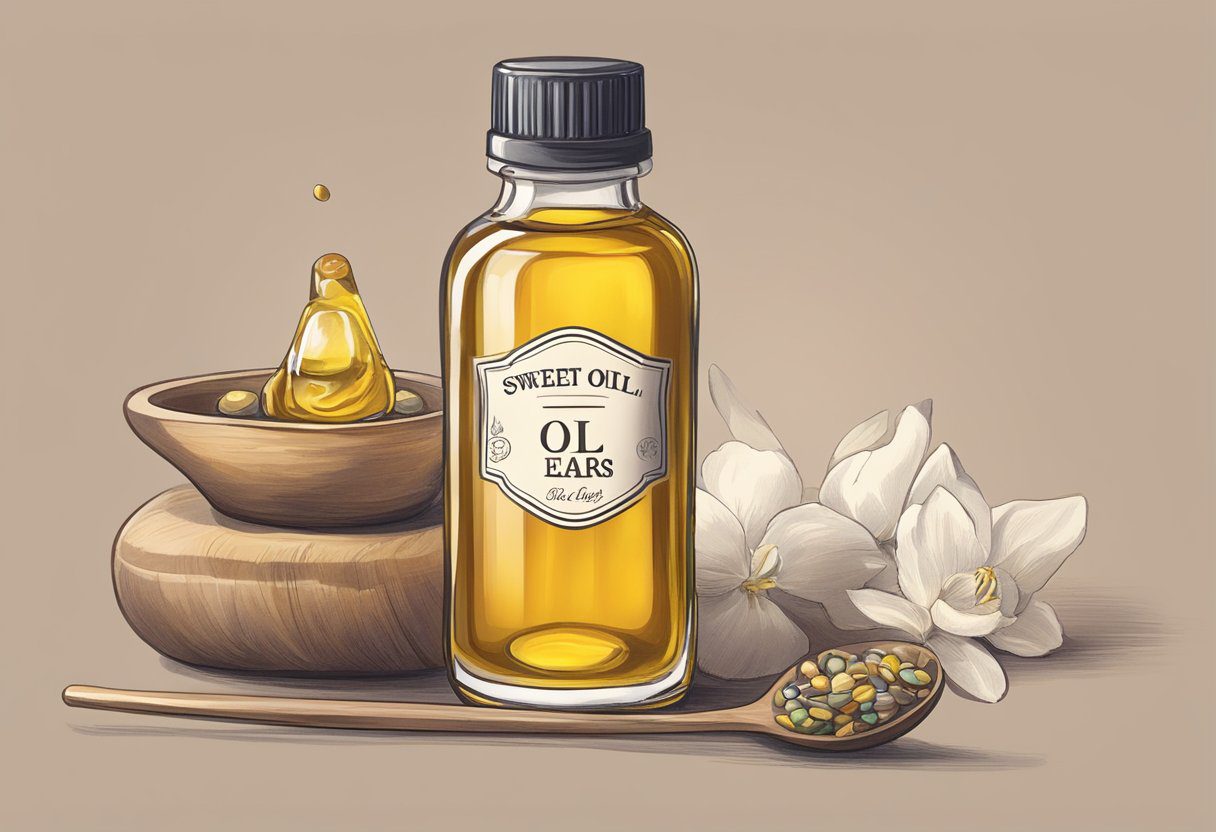
Sweet oil, commonly recognized as olive oil, is a natural product with a rich history of diverse applications. Refined types of olive oil, including extra virgin olive oil, are known for their purity and health benefits. In the context of ear care, sweet oil is commended for its gentleness and potential effectiveness.
Composition:
Sweet oil primarily consists of monounsaturated fats, which are deemed beneficial for health. Specifically, the oil contains:
- Monounsaturated fats: These fats are known to support healthy cholesterol levels.
- Saturated fats: Present in lower quantities, which may aid in moisturizing and reducing inflammation when applied topically.
- Antioxidants: Olive oil is rich in compounds that help protect cells from damage.
Nutrition Facts:
In a nutritional context, sweet oil offers:
| Nutrient | Benefit |
|---|---|
| Monounsaturated fats | May improve heart health |
| Saturated fat | Can contribute to skin health |
| Antioxidants | Protect cells from oxidative damage |
Almond oil is another type of sweet oil that shares similar uses and is often preferred for its lighter texture and potential hypoallergenic properties.
When choosing sweet oil for ear care, extra virgin olive oil is favored due to its high quality and concentration of beneficial compounds. It’s important to source high-quality oil to ensure maximum benefits and minimize the risk of impurities.
Health and Medical Uses
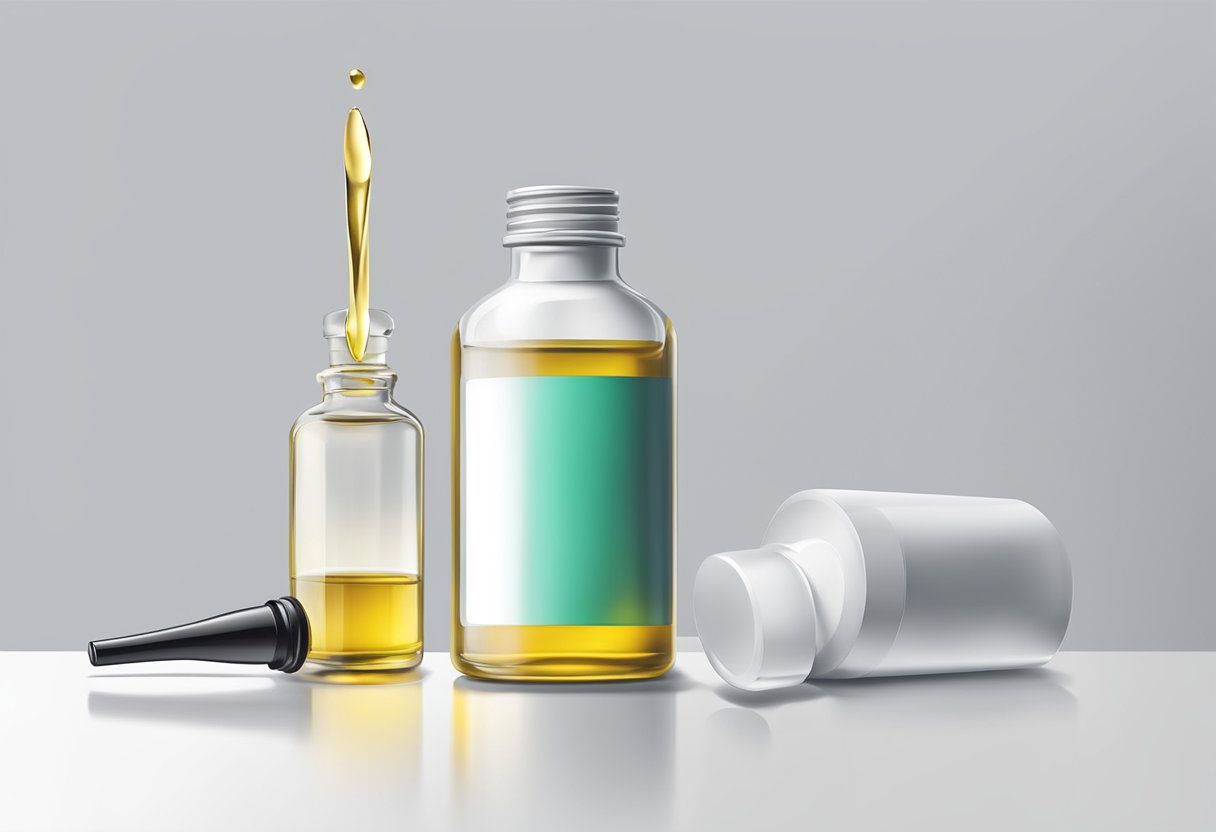
Sweet oil, commonly referred to as olive oil, has been traditionally used to address various ear-related health issues. It’s known for its potential in softening earwax and providing relief from ear pain.
Ear Health
Sweet oil may facilitate the removal of excess earwax (cerumen), which can contribute to ear discomfort and potential hearing loss. As an ear drop, it can soften the wax, making it easier to expel and hence may prevent impaction. Additionally, for those experiencing earache or discomfort, it is considered to have natural anti-inflammatory properties that might alleviate pain.
Skin and Hair Applications
Apart from its uses in ear health, sweet oil is recognized for its moisturizing benefits for skin and hair. It can be applied to cuticles to soften them and is sometimes used as a natural shaving cream. For hair care, it’s touted to lessen brittle hair, acting as a conditioner that promotes a healthier scalp and strands.
Other Health Implications
Some propose that sweet oil has antibacterial and anti-inflammatory properties, which may aid with minor infections and inflammations in other parts of the body, not exclusively the ear. However, it’s essential to note that it’s not a substitute for medical treatment in the case of severe infections caused by bacteria, viruses, or fungi.
Home Remedies and Traditional Uses
Historically, herbalists have recommended sweet oil as a home remedy for not only ear problems but also for a variety of minor ailments like sore throat and allergies. It has been considered a folk remedy for multiple health issues, though these uses are not always backed by scientific evidence.
Safety and Precautions
While sweet oil is generally safe, there can be risks of allergic reactions or further ear complications if used improperly. Doctors typically recommend consulting a healthcare provider before using it for any medical condition, especially in pediatrics. It should never be used if there is any suspicion of a ruptured eardrum, as it could lead to further complications.
Administration and Dosage
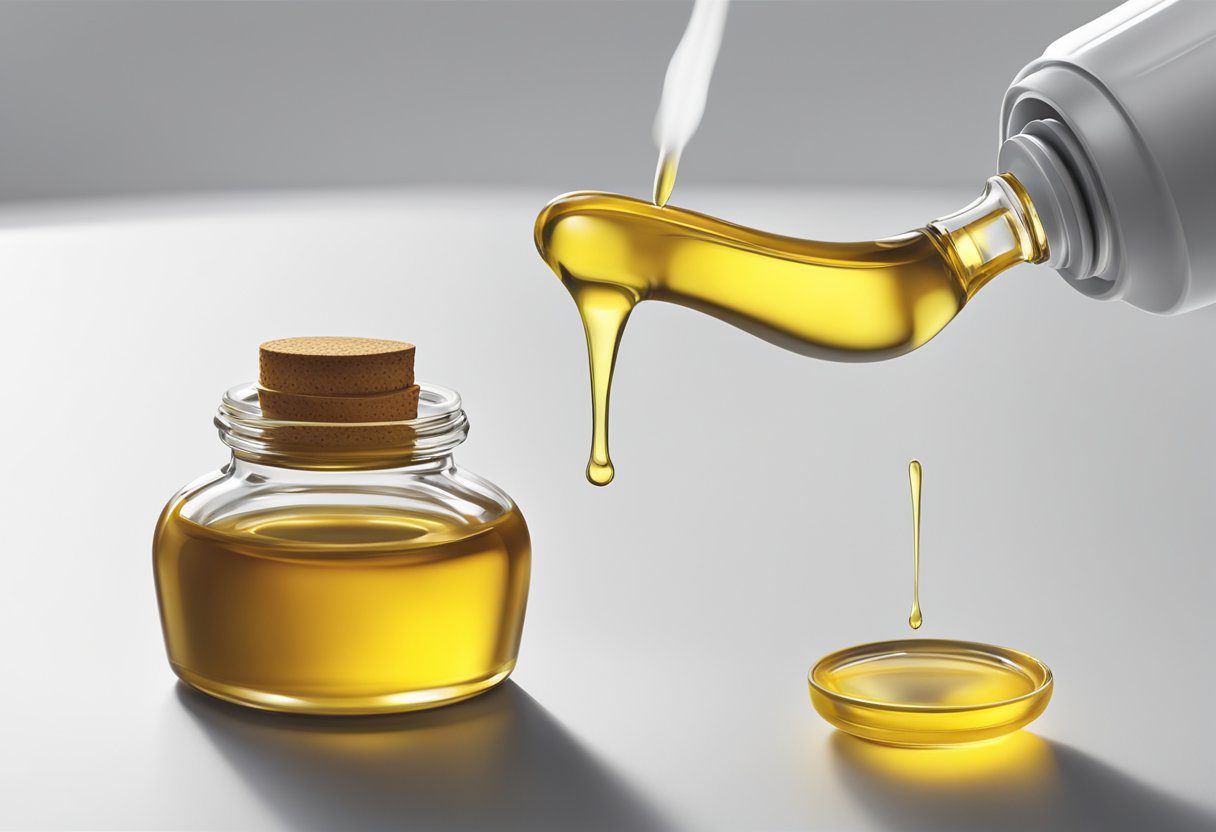
Before applying sweet oil, individuals should consult with a doctor, particularly in pediatrics, to ensure appropriate use for conditions such as ear infections. The method of administering sweet oil involves warming the oil and applying it topically to the ear canal.
Applying Sweet Oil to Ears
To safely apply sweet oil to the ears, one should follow these steps:
- Warm the Oil
- Heat a small amount of sweet oil to body temperature to prevent discomfort or dizziness.
- Prepare the Application Tool
- Use a clean dropper to control the quantity of oil used.
- Administer the Oil
- With the individual’s head tilted, dispense a few drops of oil into the ear canal.
- Consider using a cotton ball to keep the oil in place and protect clothing or bedding.
- Duration and Frequency
- Typically, sweet oil can be applied 2 to 3 times daily, but the exact period should be as advised by a doctor.
- Observation
- Monitor for any signs of irritation, discomfort, or allergic reaction.
- Seek medical attention if symptoms like earache, hearing loss, or tinnitus worsen.
It’s crucial to note that sweet oil should not be used if there is any suspicion of a ruptured eardrum, and care should be taken to avoid introducing any contaminants into the ear canal. Parents should be particularly cautious when treating children, as their ears are more sensitive.
Comparative Efficacy
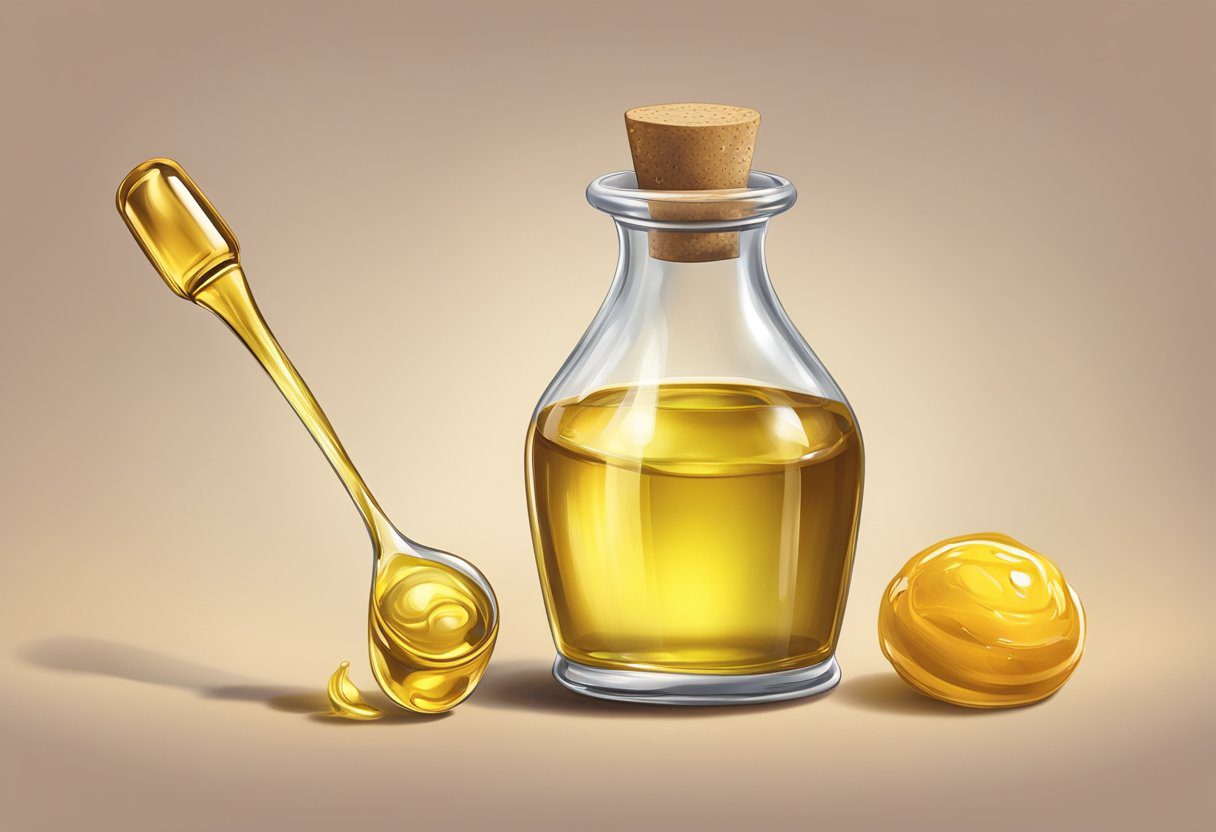
When evaluating the effectiveness of sweet oil, commonly known as olive oil, as a treatment for ear-related issues, it is essential to consider its properties in comparison to other treatments. Sweet oil contains antioxidants and has antibacterial characteristics, which are believed to contribute to its potential in managing pain and inflammation. Patients may experience relief from earache and reduction in inflammation when using sweet oil as a home remedy.
Extra virgin olive oil, the purest form, is often recommended due to its higher content of beneficial compounds. This type of oil is less processed, preserving more of its natural remedies including antioxidants and antibacterial properties.
In a clinical setting, antibiotics are a common medical treatment for ear infections. They target the bacteria responsible, leading to a decrease in inflammation and pain. Antibiotics are generally more effective against bacterial infections compared to natural remedies, such as sweet oil.
Comparing sweet oil to medical treatments reveals variances in efficacy:
- Pain and Inflammation: Sweet oil can provide a soothing effect on pain and inflammation, but may not be as potent as medical anti-inflammatory drugs or pain relievers.
- Antibacterial Properties: While sweet oil has some antibacterial properties, antibiotics are specifically designed to target and kill bacteria more efficiently.
- Use as an Antioxidant: Sweet oil’s antioxidant properties contribute to overall ear health, but its role is more supportive than curative when compared to direct medical treatments.
In summary, while sweet oil may offer relief and has its advantages as a natural remedy, it is generally considered less effective than prescribed medical treatments for ear infections, earwax removal, and related issues. Users should consult healthcare professionals when dealing with persistent or severe conditions.
Considerations for Children

When it comes to treating earaches in children, sweet oil (also known as olive oil) has been traditionally used as a home remedy. In pediatrics, care must be taken to ensure safe and effective treatment methods are utilized. Middle ear issues, such as otitis media and acute otitis media, are common causes of ear pain in children.
Usage of Sweet Oil
- Earwax Removal: Sweet oil can help soften earwax, which may ease its removal.
- Earache Relief: It can provide comfort for minor earaches typically after being warmed gently.
Safety Measures
- Doctor Consultation: Always consult a pediatrician before treating children with sweet oil.
- Warmth Test: If warmed, the oil should be tested to ensure it’s not too hot, preventing ear damage.
- Quantity: Only a few drops should be used to prevent excessive buildup.
Medical Intervention
- Antibiotics: For bacterial infections like acute otitis media, antibiotics prescribed by a doctor are necessary.
- Professional Cleaning: Severe impaction should be addressed by healthcare professionals.
Children’s ears can be sensitive, and while sweet oil may temporarily alleviate discomfort, it is not a cure for underlying infections. A doctor should evaluate persistent symptoms, as they may require different treatments.
Potential Alternatives
When considering alternatives to sweet oil for ear-related issues, it’s important to be aware of various conventional treatments that cater to specific concerns such as earwax buildup, infections, and pain relief.
Conventional Treatments
For earwax removal, specialized ear drops like Cerumenex may be used under the guidance of a healthcare provider. Cerumenex helps to soften and break down earwax, making it easier to remove.
In cases of mild ear infections, a doctor may recommend watchful waiting or may prescribe antibiotics if they suspect a bacterial cause. With allergies or fungal infections, specific treatments are employed that target the underlying issue, often involving antifungal or anti-allergy medications.
For pain management in children and adults, over-the-counter pain relievers such as ibuprofen or acetaminophen can be effective. It is important, however, to use these according to the recommended dosages and to consult a doctor, particularly in pediatrics, as children require tailored dosing.
In addition to ear drops for wax and infections, a saline rinse might be utilized for conditions tied to allergies, aiding in clearing the nasal passageways and reducing ear discomfort. Tea tree oil has antimicrobial properties and may be found in some natural ear drop formulations, but one should exercise caution due to potential skin sensitivity and should consult a healthcare professional before use.
Frequently Asked Questions
Sweet oil, also known as olive oil, is utilized in various ear treatments. This section provides clear answers to common questions about its use for ear-related concerns.
What are the benefits of using sweet oil in the ear?
Sweet oil is known for its moisturizing properties. It can soften ear wax and may help with ear discomfort by lubricating the ear canal.
Can sweet oil help with ear infections in infants?
It is essential to consult a pediatrician before using sweet oil for infants. While it may have soothing properties, only a doctor can recommend its use for an ear infection.
What is the proper way to apply sweet oil for ear congestion relief?
For ear congestion relief, warm the sweet oil to body temperature and then apply a few drops into the ear canal, allowing it to sit for a few minutes before draining.
Is there a difference between sweet almond oil and other types of sweet oil for ear care?
Sweet almond oil and olive oil are both referred to as sweet oil, but they come from different sources. Each type may have distinct properties and uses for ear care.
How can sweet oil be safely used for removing ear wax?
To safely remove ear wax with sweet oil, one should warm the oil and place a few drops in the ear. The oil can soften the wax, making it easier to naturally expel or be removed by a physician if needed.
Are there specific stores or pharmacies where sweet oil for ear treatment can be purchased?
Sweet oil can be purchased at a variety of stores, including pharmacies, supermarkets, and health food stores, as well as online retailers.
References
- Amazon.com: Marie Originals Natural Ear Oil Drops. https://amzn.to/3TRnoAC Accessed October 22, 2025
- Amazon.com. https://www.amazon.com/Sweet-Oil-Dropper-Pure-Natural/dp/B0773MGZ1D?tag=arjrmedia-20 Accessed October 22, 2025
